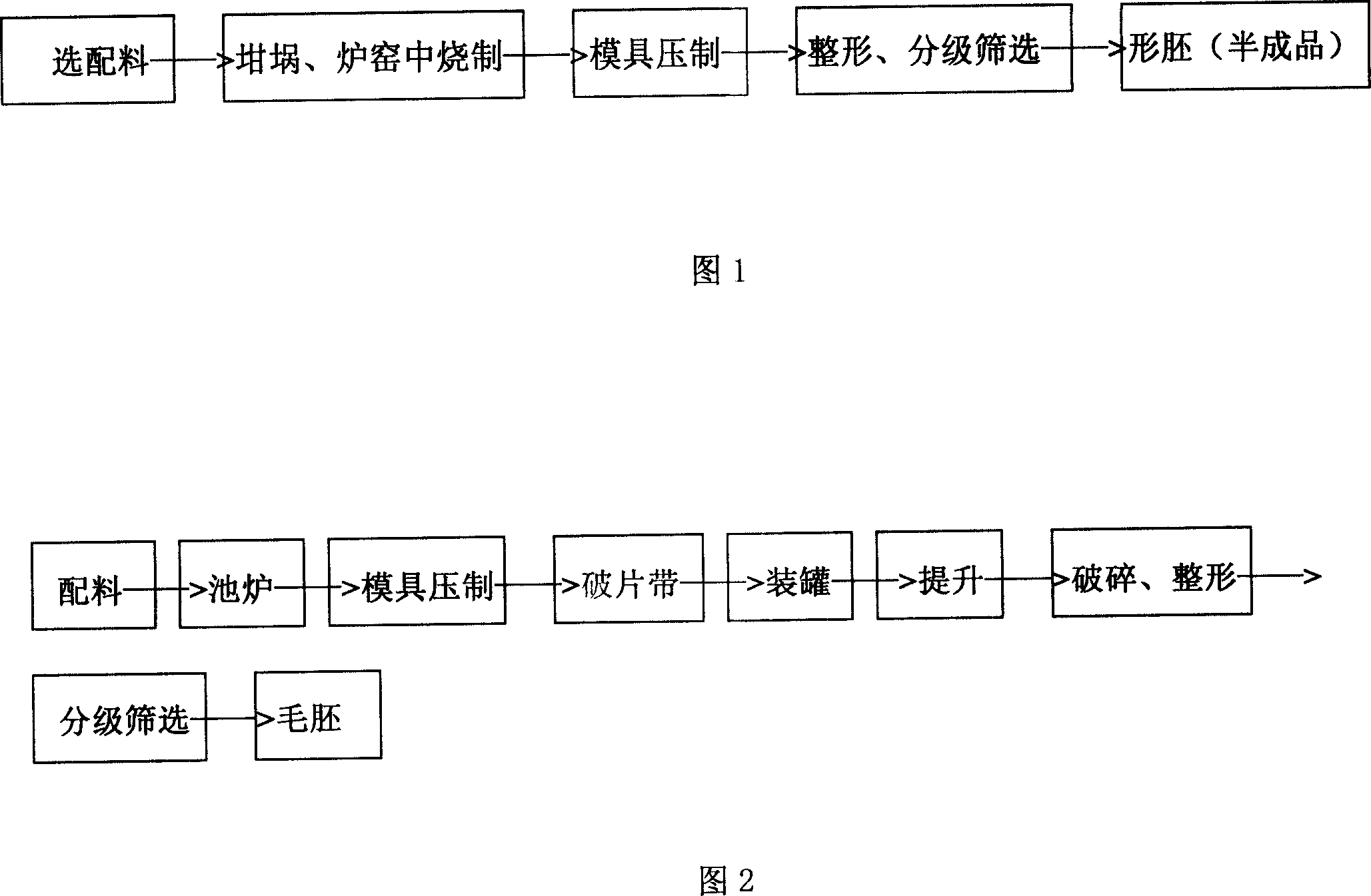Process for producing ornament glass
A production process and decoration technology, applied in the field of decorative glass production technology, can solve the problems of unstable product quality, many human factors, and high production costs, and achieve improved labor productivity, reduced energy consumption costs, and stable product quality. Effect
- Summary
- Abstract
- Description
- Claims
- Application Information
AI Technical Summary
Problems solved by technology
Method used
Image
Examples
Embodiment 1
[0015] Embodiment 1: the production technology of this decoration glass, main steps are as follows:
[0016] 1.1), raw materials according to the following weight ratio: SiO 2 50 parts; Na 2 O 12 parts; CoO 4 parts; B 2 o 3 1 part; ZnO 0.1 part; BaO 1 part; PbO 1 part; K 2 O 2 parts; 30 parts of returned waste glass; wherein the returned waste glass adopts the waste material of this formula, and the waste material is fully recycled.
[0017] 1.2) All kinds of raw materials are evenly mixed according to the formula ratio requirements, put into the furnace from the feeding port of the pool furnace at regular intervals, and coal tar is used as fuel to heat the pool furnace, and the heating temperature is controlled at 1500-1560 degrees Celsius to melt the raw materials into glass solution;
[0018] 1.3), the glass solution passes through the discharge pool of the side body of the pool furnace, the temperature of the discharge pool is controlled at 1200 degrees Celsius, the...
Embodiment 2
[0020] Embodiment 2: the difference from Example 1 is that the raw materials are in the following weight ratio: SiO 2 72 parts; Na 2 O 17 parts; CoO 8 parts; B 2 o 3 3 parts; ZnO 2 parts; BaO 10 parts PbO 6 parts; K 2 15 copies of O; 35 copies of waste glass.
Embodiment 3
[0021] Embodiment 3: the difference from Example 1 is that the raw materials are in the following weight ratio: SiO 2 60 parts; Na 2 O 15 parts; CoO 6 parts; B 2 o 3 2 parts; ZnO 1 part; BaO 5 parts; PbO 3 parts; K 2 8 parts of O; 32 parts of waste glass.
PUM
 Login to View More
Login to View More Abstract
Description
Claims
Application Information
 Login to View More
Login to View More - R&D
- Intellectual Property
- Life Sciences
- Materials
- Tech Scout
- Unparalleled Data Quality
- Higher Quality Content
- 60% Fewer Hallucinations
Browse by: Latest US Patents, China's latest patents, Technical Efficacy Thesaurus, Application Domain, Technology Topic, Popular Technical Reports.
© 2025 PatSnap. All rights reserved.Legal|Privacy policy|Modern Slavery Act Transparency Statement|Sitemap|About US| Contact US: help@patsnap.com

